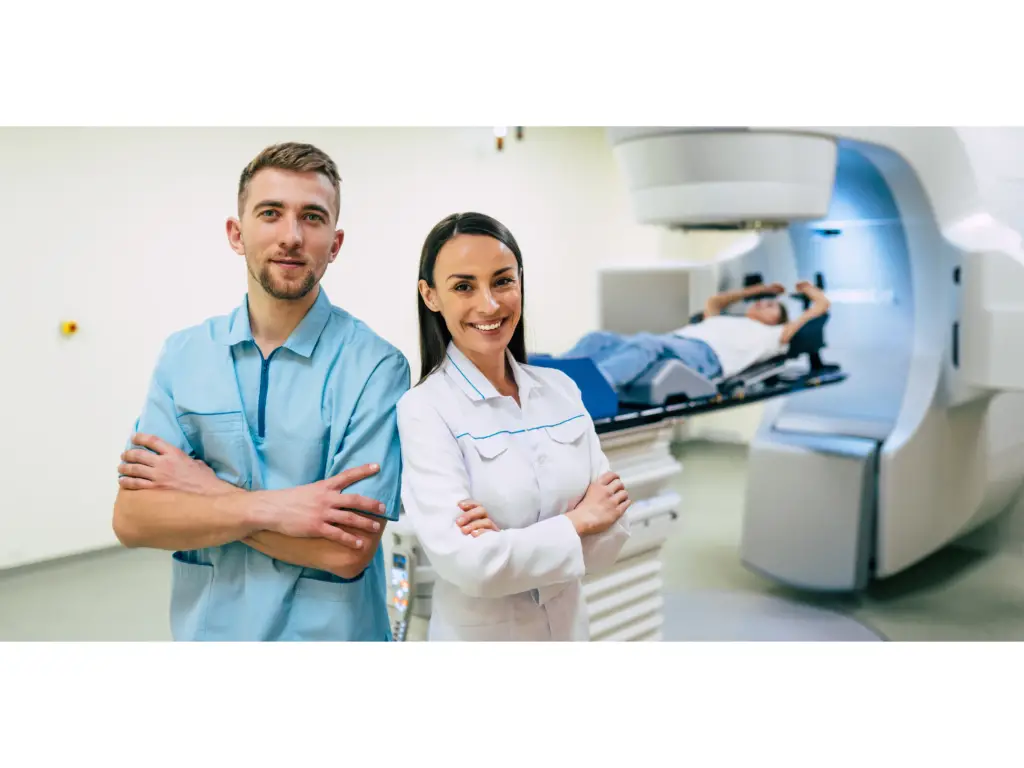Radiology stands as a cornerstone in modern medical diagnosis and treatment, bridging the gap between clinical practices and advanced imaging technologies. This medical specialty employs a range of imaging techniques such as X-rays, CT scans, MRIs, and ultrasound to detect, diagnose, and treat various diseases. Radiologists play a critical role in healthcare teams, interpreting medical images to guide patient management and treatment strategies.
Importance of Radiologic Technology in Diagnosing and Treating Patients
The significance of radiologic technology lies in its ability to provide clear and detailed images of the body’s internal structures. This non-invasive insight is invaluable for early detection of diseases, monitoring treatment progress, and planning surgical interventions. The evolution of radiology has led to improved patient outcomes, reduced recovery times, and enhanced overall healthcare efficiency.
Educational Pathway to Diagnostic Radiology
Bachelor’s Degree Preparation
Students start their journey with four years of undergraduate education, focusing on premedical courses such as biology, chemistry, physics, mathematics, and English. While the major may vary, completing these core subjects is crucial for medical school eligibility.
Advancing to Medical Degrees
After obtaining a bachelor’s degree, aspiring radiologists enroll in medical school, earning either an MD or DO degree over four years. This phase deepens their medical knowledge and clinical skills, preparing them for specialized training.
Postgraduate Training Dynamics
Post-medical school, graduates enter a residency program, starting with a year in a non-radiology field to build a broad clinical foundation. Subsequent years, PGY-2 to PGY-5, are dedicated to intensive radiology training, where residents learn to interpret images and perform diagnostic procedures.
Subspecialty Fellowship Training
After completing residency, some radiologists further specialize through fellowship programs. These one to two-year programs cover areas like musculoskeletal radiology, pediatric radiology, and interventional radiology, enhancing their expertise in specific imaging techniques.
Top Radiology Programs in the U.S.
Highlighting Notable Universities
We feature top-tier universities like Weber State University, Southern Illinois University-Carbondale, and Loma Linda University, known for their comprehensive radiology degree programs. Each offers unique strengths, from extensive research opportunities to varied clinical rotations.
Diving into Residency Programs
Institutions like Yale School of Medicine and Washington University School of Medicine offer distinct residency programs. Yale integrates resident education with cutting-edge research, while Washington University focuses on a balance between diagnostic and interventional radiology.
Exploring Program Varieties and Specializations
We examine different programs that cater to various interests within radiology. From diagnostic to interventional radiology, each program offers specialized tracks to prepare students for their future roles in healthcare.
Residency Programs and Specializations
Structure and Progression of Residency Programs
Radiology residency programs typically span six years, starting with foundational training and advancing to more autonomous clinical work. Residents begin with general rotations, gaining exposure to all radiology branches before focusing on their areas of interest.
Specialty Areas within Radiology
Residents can choose from multiple specialties, such as breast imaging, musculoskeletal radiology, and neuroradiology. These specialties allow for focused learning and skill development in particular imaging techniques and patient care areas.
Fellowship Opportunities for Further Specialization
After residency, radiologists may pursue fellowships for deeper specialization. Options include pediatric radiology, vascular interventional radiology, and more. These programs offer intensive training and research opportunities in specific subfields.
Career Outcomes and Opportunities
Exploring the Radiology Job Market
The demand for radiologists continues to grow, driven by advances in medical imaging technology and an aging population. Graduates find opportunities in hospitals, clinics, and private practices, engaging in diagnostic imaging, treatment planning, and research.
Diverse Career Paths in Radiology
Radiologists can pursue careers in various subfields, from pediatric to interventional radiology. They can also specialize in specific imaging techniques, contributing to advancements in healthcare and patient treatment.
Certification and Continuous Learning
Board certification is a crucial step for radiologists, ensuring they meet professional standards. Continuous education helps them stay updated with technological advancements and evolving healthcare practices.

Career Outcomes and Opportunities
Job Market and Demand
The demand for radiologists continues to grow, reflecting the critical role of imaging in modern medicine. Graduates often find opportunities in hospitals, private practices, and research institutions.
Paths within Radiology
Career paths vary widely, from hospital-based radiologists to specialized practitioners focusing on specific areas like interventional radiology or pediatric imaging. Many radiologists also engage in teaching or research, contributing to the evolution of medical imaging.
Board Certification and Professional Development
Achieving board certification is a key milestone, demonstrating expertise and commitment to quality patient care. Continuing education and professional development are essential for maintaining certification and staying abreast of technological advancements.
Global Opportunities and Telemedicine
With advances in telemedicine, radiologists have new opportunities for remote consultations, expanding their impact beyond traditional settings. The global nature of health care also offers chances to work internationally, broadening cultural and professional horizons.
Conclusion
Radiology Programs in the United States offer a rigorous and fulfilling pathway for those interested in combining healthcare with cutting-edge technology. These programs prepare students for a diverse range of careers in medical imaging, ensuring they are well-equipped to meet the challenges and advancements of modern medicine. As radiology continues to evolve, it presents a dynamic field ripe with opportunities for professional growth and contribution to patient care. Aspiring radiologists are encouraged to pursue this rewarding journey, shaping the future of medical diagnostics and treatment.

